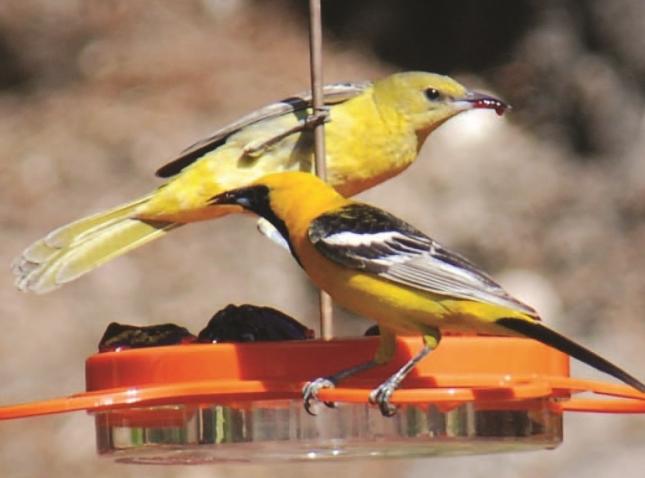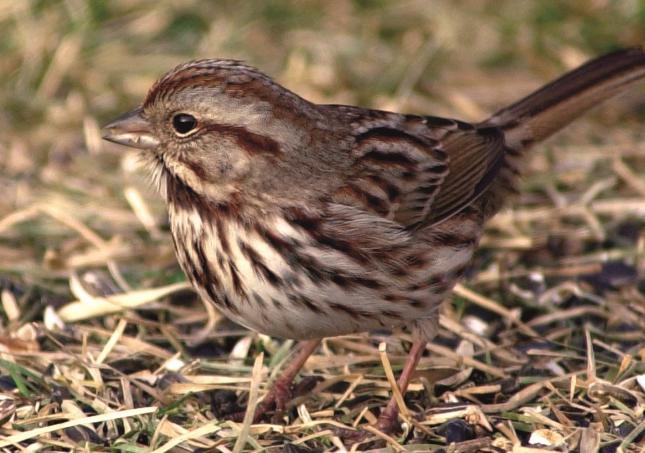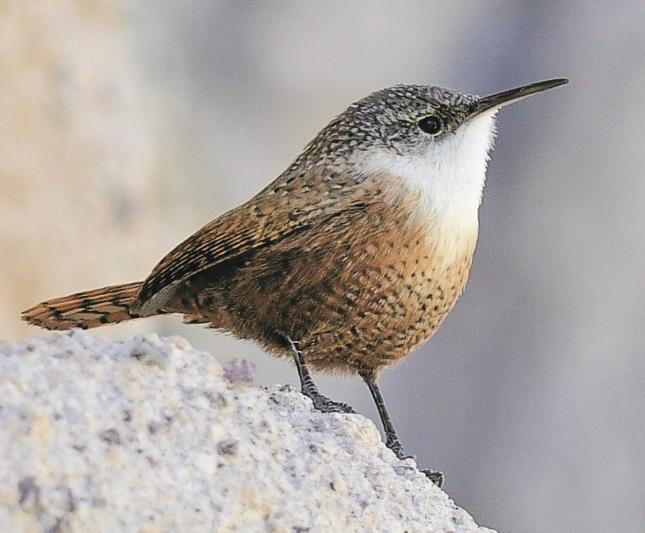July: Fledges at the Feeder
 Local bird watchers are reporting record numbers of juvenile orioles. Orioles happily take advantage of the abundant hummingbird feeders in this area, as well as the numerous palm trees where they build their hanging nests. The fledglings now are bursting out of those nests and heading to feeders to get ready for their long September migration back to Mexico. The males will be gone by the end of August, but females and juveniles linger into September.
Local bird watchers are reporting record numbers of juvenile orioles. Orioles happily take advantage of the abundant hummingbird feeders in this area, as well as the numerous palm trees where they build their hanging nests. The fledglings now are bursting out of those nests and heading to feeders to get ready for their long September migration back to Mexico. The males will be gone by the end of August, but females and juveniles linger into September.
Left: Their favorite foods help this pair of Bullock's Orioles raise more chicks
Rare birds: A Yellow-Billed Cuckoo was observed briefly at the Ballona Freshwater Marsh on June 21. Santa Catalina Island had a Cape May Warbler, an Orchard Oriole and a Tennessee Warbler on June 14 in the Thompson Reservoir area and a Baltimore Oriole, a Black-and-White Warbler and a Northern Parula in Avalon the same day. The Black and White Warblers also show up in Westside neighborhoods.

Right: Song Sparrows sing from treetops but forage on the ground
Mating season is mostly finished, but that hasn't stopped local Song Sparrows from singing their hearts out. Their distinctive Beethoven's 5th call, “tweet-tweet-tweet trill,” rings out most mornings and evenings in Westside neighborhoods.
Also visiting feeders are Lesser Goldfinches and their fledglings. A recent article by Cornell Lab of Ornithology says there is evidence they are moving northward and changing their territory, possibly because of climate change. However, some spots near the coast still have regular visitations. Nyjer, plain or mixed with fine sunflower chips, is still a favorite food. Their brightly colored cousins, the American Goldfinches, are gone to the high mountains now, where they usually nest. nest.

Left: Tiny but powerful in voice, Canyon Wren calls echo across the mountains
Walk along a ridge in the Santa Monica Mountains at sunset, and you will be serenaded by the Canyon Wrens. Their haunting calls, like waterfalls of notes, echo off the slopes as the twilight deepens.
Plump gray Bushtits have been sequestered all spring in the densest thickets they could find to hatch and raise their young. But now their breeding cycle is over, and, rather than pairing off, they are forming flocks of dozens of birds that comb shrubs for tiny bugs. They take care of each other with a high-trill alarm call, when a hawk appears.
While you are waiting for the big show of August's Perseid meteor shower, you can view the Delta Aquarids, which peak in late-July.

